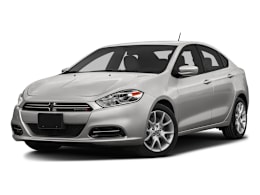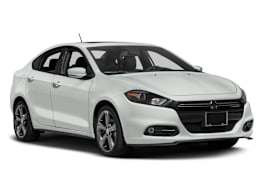For the first all-new model to emerge from the Fiat-Chrysler alliance, Dodge has resurrected an old nameplate and put it on a car with an Italian heritage. The new Dart, which replaces the subpar Caliber, is the first decent small car from Dodge in decades. It's appealing in many ways, but frustrating in others. Overall, it can't measure up to the best in class. And for a car that needed to be an all-star, the Dart is a position player at best.
The Dart gets a lot of things right. It has a solid, substantial feel and a relatively quiet cabin, even at highway speeds. It handles well, whether cruising on a two-lane backcountry road or being pushed to its limits at our track. The steering is well weighted, and there's minimal body lean in turns. And, surprising for a small sedan, you can also get a wide variety of optional features. This includes some -- such as a blind-spot warning system, automatic high/low beams, and a heated steering wheel -- that aren't offered in many competitors.
Where the Dart stalls out is in its powertrains and interior accommodations. The 160-hp, 2.0-liter four-cylinder engine in our $20,680 SXT feels notably underpowered. Our Dart Rallye ($24,490 as tested) has a thrashy-sounding 160-hp, 1.4-liter turbocharged four cylinder engine with an optional automated-manual transmission that suffers from drivability issues. Inside, the lumpy front seats have uneven, uncomfortable cushioning. And despite its generous dimensions, the rear seat is somewhat tight. The Dart also gets rather expensive when you start adding on the options; for the price of our Rallye, you could get a larger family sedan.
In the end, both of our tested 2013 Darts scored too low in our tests to be recommended. But 2014 brought quite a few tweaks. Initial impressions are that the revisions make for a notably nicer car. The biggest change: the 2.4-liter four-cylinder and a six-speed automatic become the primary powertrain combination. It is considerably smoother than the 1.4-liter turbo with the twin-clutch transmission, which still remains in an Aero version that emphasizes fuel economy, and is much more responsive than the 2.0-liter. Other changes include interior revisions to improve seat comfort and simplified model and options offerings.




















